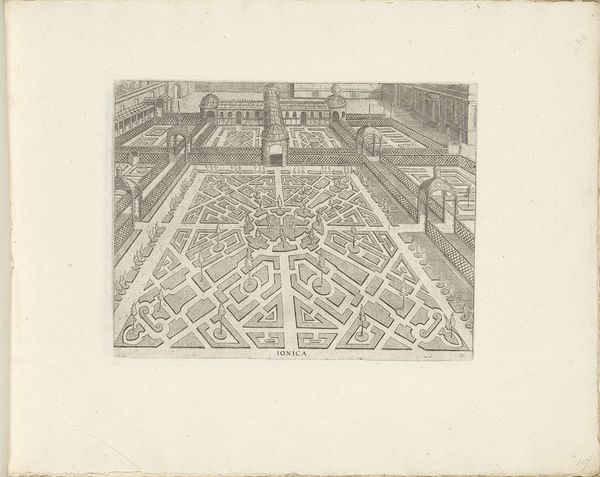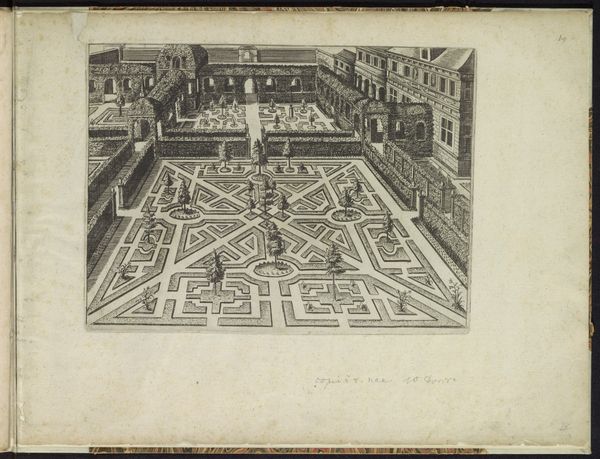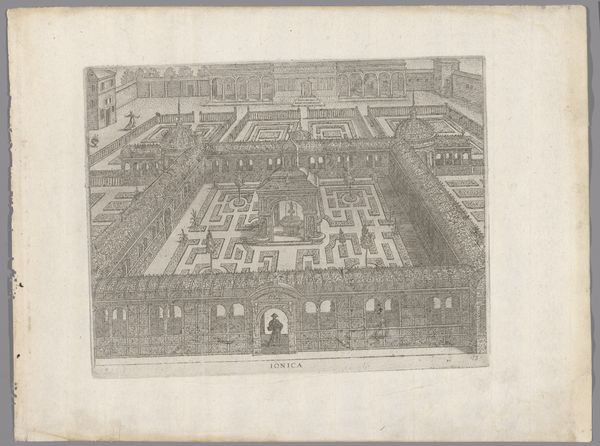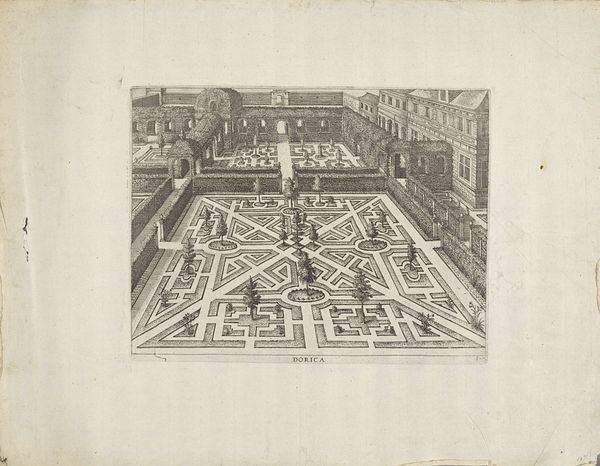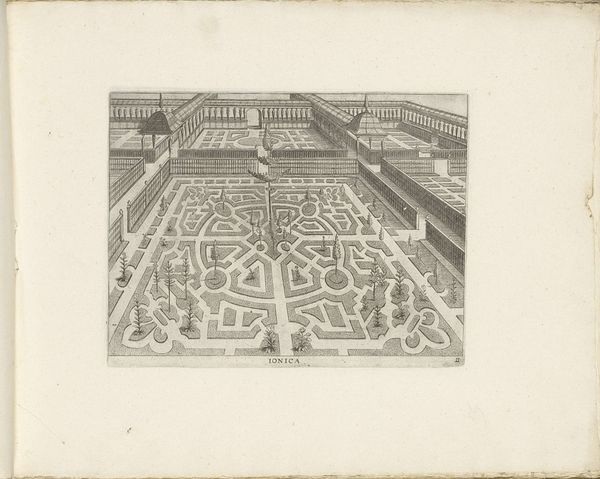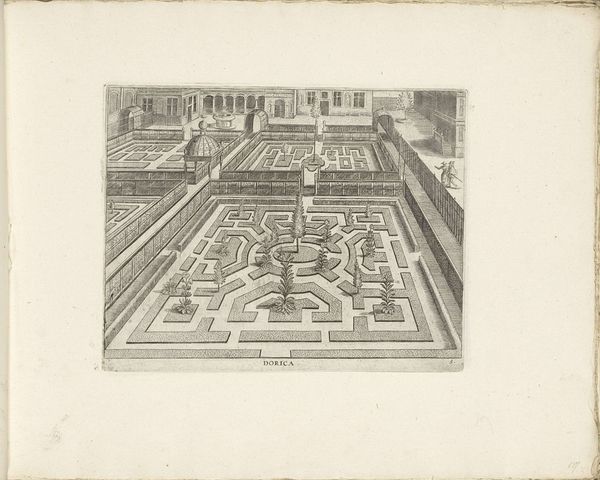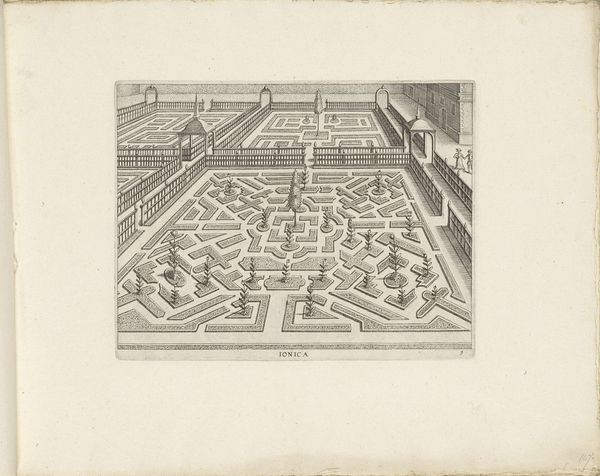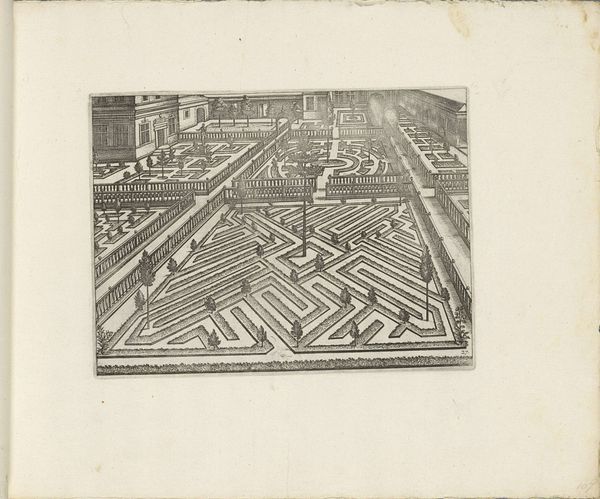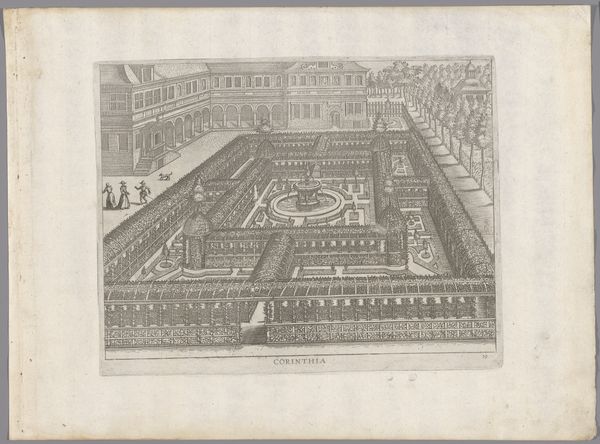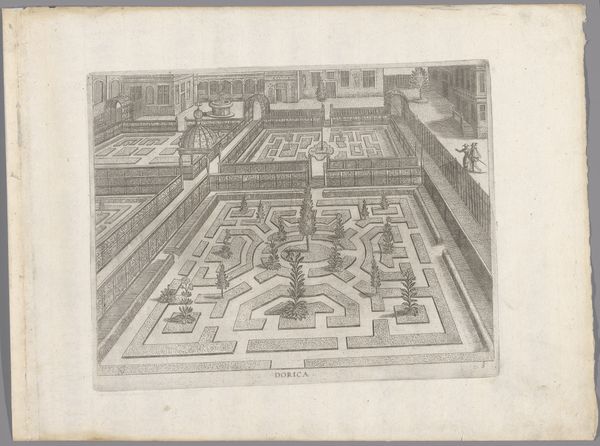
Tuin met centrale parterre omsloten door een gang van traliewerk en in het midden een fontein c. 1583 - 1640
0:00
0:00
anonymous
Rijksmuseum
print, engraving
# print
#
old engraving style
#
landscape
#
geometric
#
cityscape
#
history-painting
#
engraving
Dimensions: height 193 mm, width 248 mm
Copyright: Rijks Museum: Open Domain
Curator: This engraving, dating from roughly 1583 to 1640, is entitled "Tuin met centrale parterre omsloten door een gang van traliewerk en in het midden een fontein," which translates to "Garden with a central parterre enclosed by a trellis corridor and a fountain in the middle." It's currently held in the Rijksmuseum. Editor: My first impression is of almost oppressive order. The geometry is striking – the precise lines, repeated shapes. The overall effect, though, is strangely serene, despite the density of detail. Curator: It's interesting that you find serenity in such geometric rigidity. I read the garden design as a reflection of societal control. These formal gardens were status symbols, displaying dominion over nature but also a kind of imposed order on life itself. This piece is so evocative of the politics and aesthetics of the era, wouldn’t you agree? Editor: Yes, absolutely. From a compositional point of view, the artist masterfully used perspective to draw the eye into the depths of the garden. It’s structured by repeating shapes, and the interplay of light and shadow creates depth and volume. The symmetry itself is visually pleasing; consider how it stabilizes the entire image. Curator: And that precise structure certainly served purposes beyond the aesthetic! Think of the history of garden design in relation to colonization and the "ordering" of foreign lands. Even the act of portraying such a space becomes part of this cultural narrative of power and control. How does one move through a space, literally or figuratively, when the pathways are predetermined? Editor: A provocative way to view it! Though, to move back to purely formal considerations, consider the texture achieved through the engraving technique, so many finely wrought lines which evoke a tangible sense of foliage and stonework, a stark beauty to the contrast. Curator: Well, I find the “texture” equally evocative of labor—someone painstakingly creating this landscape, reflecting hierarchies. To your point, it is beautiful, yet for whom? How are wealth and power embedded into something seemingly so simple as a garden? It serves as a testament of the world it mirrored, I think. Editor: Yes, there’s no doubt this piece speaks of power structures inherent within landscape design during this era. I am walking away pondering that even what seems to be tranquil has much to say beyond mere pleasant visuals.
Comments
No comments
Be the first to comment and join the conversation on the ultimate creative platform.


